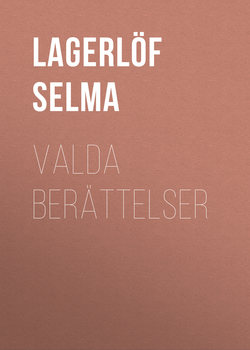Читать книгу Valda Berättelser - Lagerlöf Selma, Marie Franzos - Страница 1
Selma Lagerlöf
ОглавлениеSelma Lagerlöf was born at the Mårbacka homestead in Vermland, Sweden, Nov. 20, 1858. Although in poor health as a child, she early devoted herself to study, meanwhile gathering from the picturesque native environment a rich fund of poetic impressions afterwards freely utilized in her literary production. After due preparation she taught for ten years (1885-95) in the Elementary School for Girls in the city of Landskrona.
Her first published work, Gösta Berlings saga (1891), The Story of Gösta Berling, is a powerful and magnificent re-creation of episodes from real life in Vermland about 1820. This romance won for her instant recognition at home and soon bore her name and fame to other lands. Within a few years it was translated into no less than twelve languages.
Gösta Berling was followed by a succession of notable works of which a mere record is here given: Osynliga länkar (1894), Invisible Links, a collection of short stories; Antikrists mirakler (1897), The Miracles of Antichrist, depicting in romantic form two contending forces in Sicilian life, hereditary faith in a grapple with the modern labor movement; Drottningar i Kungahälla (1899), another collection of short stories; En herrgårdssägen, From a Swedish Homestead, a charming story, published separately the same year; the great novel Jerusalem (1901 and 1902), Jerusalem (I) and The Holy City (II), a work characterized by H. Hesse, a German writer and critic, as “the greatest and best contribution to modern Swedish romantic prose, a book on Sweden’s soul, multiplex, yet single, benign, yet powerful, at once realistic and visionary, – in no other recent work is the soul of a nation so truly expressed;” Kristuslegender, Christ Legends, and Herr Arnes pengar (1904); a remarkable reader for the public schools, entitled, Nils Holgerssons underbara resa (1906 and 1907), The Wonderful Adventures of Nils, and, Further Adventures of Nils; En saga om en saga och andra sagor (1908), including Tösen från Stormyrtorpet, The Girl from the Marsh Croft, probably the finest writing done by Selma Lagerlöf’s pen; Liljecronas hem (1911), Liljecrona’s Home; Körkarlen (1912), Kejsarn af Portugallien (1914), The Emperor of Portugallia; Troll och människor (1915); Bannlyst (1918), The Outcast, and a second collection entitled, Troll och människor, published in 1921. The English title is added, where known, to indicate what works of Selma Lagerlöf are available in translation.
In 1907 the University of Upsala conferred upon Selma Lagerlöf the honorary degree of Doctor of Philosophy; the Nobel prize in literature was awarded to her in 1909; in 1914 she was made one of the eighteen members of the Swedish Academy, a distinction now for the first time accorded to a woman. Since 1897 she has lived in the city of Falun. A few years ago she purchased her parental homestead Mårbacka (the Lövdala of Gösta Berlings saga), where she now spends part of the year.
Selma Lagerlöf’s writings are distinguished for vividness of imagination, power and originality in depiction of character, resulting in lifelike men and women endowed with souls, and she has the gift of epic narration, with a touch of old folklore to her style. This she has brought to the point of extreme simplicity, dispensing with all savor of artificiality. Her work bears the bright stamp of religious optimism and a sober sense of duty. The strong ethical purpose manifest in all that she has written sets her apart from all other novelists of her time.
